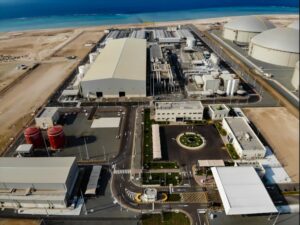OPEC has adjusted its forecast for global oil demand growth in 2024, revising it downward by 106,000 barrels per day (tb/d) from the previous month’s assessment. Despite the revision, oil demand is still expected to grow by approximately 1.9 million barrels per day (mb/d) year-on-year.
According to OPEC’s October report, world oil demand is anticipated to reach 105.6 mb/d by the fourth quarter of 2024, with an annual average of 104.1 mb/d. This growth is driven by strong demand in air travel, road transportation, and robust industrial activities, especially in non-OECD countries.
Middle East Demand Growth
The report highlights that oil demand in the Middle East is expected to rise by an average of 265 tb/d year-on-year in the fourth quarter of 2024, with full-year demand forecasted to grow by 200 tb/d, reaching an average of 8.8 mb/d. Looking ahead to 2025, the region is projected to see a year-on-year increase of 249 tb/d, bringing the total to an average of 9.1 mb/d.
This growth is expected to be bolstered by continued economic activity, full recovery in air travel surpassing pre-pandemic levels, and a rise in the use of gasoline, transportation diesel, and jet fuel.
Refinery Capacity and Global Demand Trends
OPEC also notes that new refinery capacities in non-OECD countries, particularly in China and the Middle East, will contribute to global oil demand growth. However, uncertainties remain, especially in relation to broader global economic developments.
The organization’s forecast for global oil demand growth in 2025 has also been revised downward by 102 tb/d in some non-OECD sub-regions. As a result, global oil demand is expected to grow by around 1.6 mb/d year-on-year, averaging 105.8 mb/d for 2025.
OECD vs. Non-OECD Demand
The report indicates that OECD countries are expected to see a modest growth of 0.1 mb/d year-on-year in oil demand for 2025, while the non-OECD region will continue to be the primary driver of growth, contributing 1.5 mb/d year-on-year.





